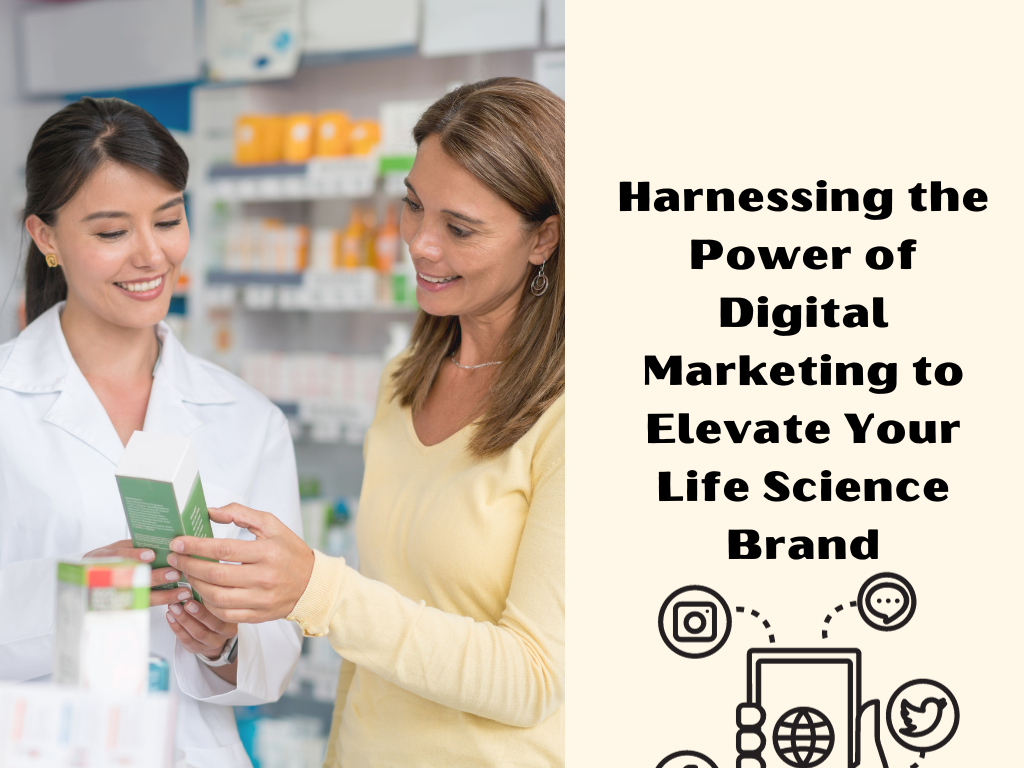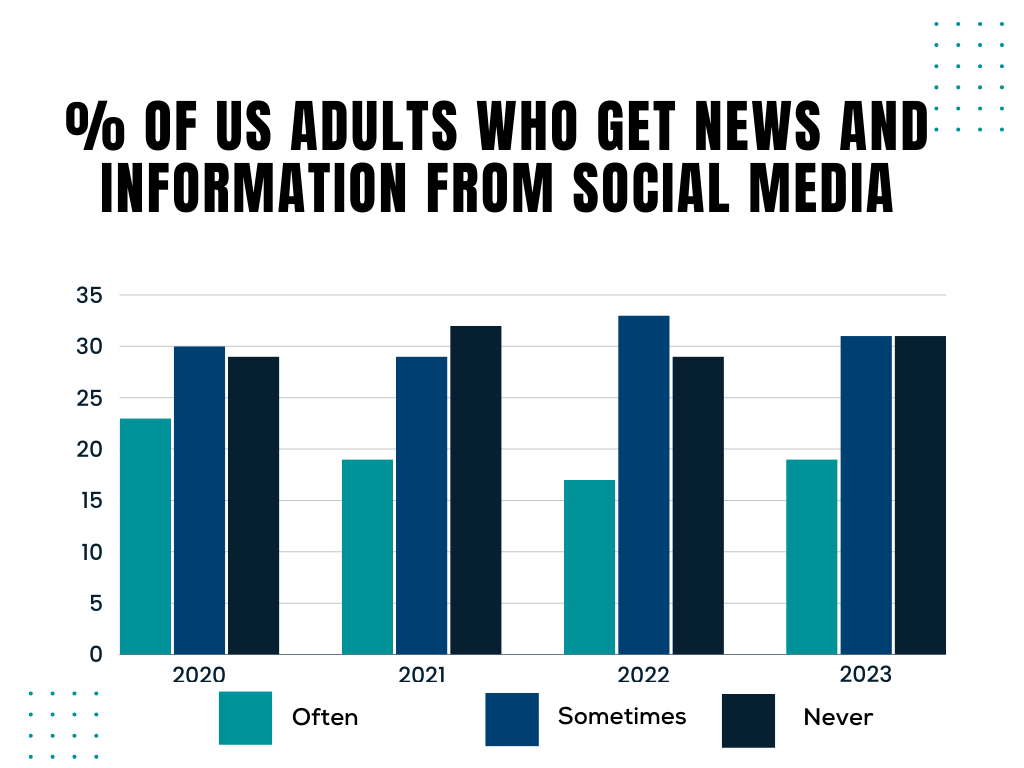Social Media
Harnessing the Power of Digital Marketing to Elevate Your Life Science Brand

The life science industry has seen a major digital transformation over the past decade. As consumer behavior and expectations evolve in an increasingly online world, life science brands must leverage the right digital strategies to drive awareness, engagement, and growth. In this article, we will explore the key elements involved in developing an impactful digital marketing strategy tailored to the unique needs of the life science sector.
Establishing a Strong Online Presence for Your Life Science Brand
Establishing a strong online persona for your life science brand is foundational for a successful digital marketing strategy. To create a strong digital presence, maintaining an active presence on relevant social media platforms is imperative. This is for engaging with the scientific community as well as potential customers. Life science marketing companies recommend a dual approach to position your life science brand as an authoritative entity within the industry.
Creating a High-Quality Website to Anchor Your Digital Initiatives
Your website serves as the hub for all online activity, so optimizing it should be the first priority. Key elements include:
- Intuitive navigation: Make it effortless for visitors to find information. Use drop-down menus, site searches, and sitemaps.
- Compelling content: Share information on products/services, disease education, clinical trial resources, financial assistance options, and more.
- Strong calls-to-action (CTAs): Motivate visitors to request info, download assets, sign up for newsletters, etc.
- Responsive design: Ensure optimal viewing on all devices. Mobile responsiveness is now an expectation.
Websites with a clear value proposition have a 14.6% higher conversion rate than those without. It’s essential to invest time in crafting an impactful message.
Leveraging Social Media to Increase Awareness and Engagement
Source Pew Research
With widespread social media adoption across age groups, social platforms present invaluable opportunities for life science brands. Strategize your approach:
- Choose platforms strategically: Assess demographic data to determine the best fits
- Share visual content: Posts with images receive 2.3X more Facebook engagement
- Foster community: Encourage audience interaction through likes, shares, and comments
- Amplify reach: Leverage employees as brand advocates to expand social media visibility
The synergy between a well-crafted website and a dynamic social media presence not only enhances visibility but also fosters a sense of community around your brand. Professionals within the life sciences are more likely to engage with a brand that not only provides valuable information but also actively participates in discussions, showcases thought leadership, and contributes to the collective knowledge of the industry.
Crafting Compelling Content to Captivate Your Audience
Content marketing generates 3X more leads than traditional outbound marketing while costing 62% less. For life science brands, well-crafted content is essential for:
Informing and Educating Visitors to Build Trust and Credibility
Crafting compelling content is crucial for life science brands. Well-crafted content, such as blog posts, articles, whitepapers, and brochures, plays a vital role in informing and educating visitors to build trust and credibility. Providing helpful disease state education and product information can position your brand as an authority.
Optimizing Discoverability Through Search Engine Optimization (SEO)
With 68% of web experiences originating from search engines, SEO is vital. Perform keyword research to determine terms commonly used when seeking your offerings. Incorporate these organically throughout website copy and metadata. This helps content surface prominently in search results.
Other effective SEO tactics include optimizing page load speeds, improving site architecture through XML sitemaps, building high-quality backlinks from external websites, and tracking rank positions for target keyword terms.
Connecting with Visitors Through Email Marketing
Email marketing facilitates more personalized communication with key audiences. Best practices include:
Building Targeted Email Lists
Segment your master list based on customer type, specialty area, location, clinical trial involvement, and other relevant factors. Send tailored messages addressing specific needs and interests.
List segmentation alone can increase campaign click-through rates by 100.95% versus non-segmented email blasts.
Crafting Compelling Email Content and Subject Lines
Optimizing subject lines is key to increasing email opens. Incorporate recipient names and targeted messaging based on list segmentation. Consider A/B testing various subject lines to determine what resonates best.
Within email content, succinctly communicate vital information while including relevant CTAs to facilitate conversions.
Personalized subject lines boost open rates by 26% compared to generic ones.
Pay-Per-Click & Social Media Advertising for Targeted Reach
Paid ads offer a scalable way to target website traffic and increase visibility. For life science brands, key options include
Pay-Per-Click (PPC) Advertising
Google Ads is the largest PPC platform. Target ads to users searching for terms related to medical conditions, treatments and clinical trials your brand specializes in. Geo-target ads to specific locations as well.
Social Media Advertising
Facebook, Instagram etc. enable ads targeted to highly specific demographics and user behaviors. Create customized audiences tailored to ideal buyer personas of your offerings.
For both formats, continually optimize ads through A/B split testing of elements like ad copy, CTAs and landing pages. Analyze performance data frequently to allocate budget to best-performing ads.
Tracking Analytics for Data-Informed Decision Making
Implement analytics platforms like Google Analytics and Google Tag Manager to gain actionable data on digital marketing effectiveness. Key metrics include:
- Website traffic sources
- Pages/sections with high/low engagement
- Content downloads and on-site conversions
- Email open/click-through rates
- Lead quality/volume from various channels
- Return on ad spend (ROAS)
Regularly review this data and tweak strategies accordingly to maximize returns.
Overcoming Digital Marketing Challenges in the Life Science Sector
While digital marketing offers tremendous opportunities, certain aspects require special consideration:
Navigating Regulatory Requirements
Adhere strictly to regulations around content, substantiation levels, and permissible medical claims. Consult legal advisors as needed for guidance.
Establishing Thought Leadership
Strike an optimal balance between promotional and educational messaging. Position your brand as an authoritative industry resource versus a pure sales conduit.
Addressing Audience Knowledge Gaps
Simplify complex clinical terminology for layperson audiences. Facilitate clear disease and treatment education at appropriate levels based on visitor sophistication.
Frequently Asked Questions
What metrics are most vital for assessing digital marketing success in life science?
Key metrics include website traffic quality/volume, content download rates, email click-through rates, cost per lead, and return on ad spend. Optimize efforts to boost these KPIs over time.
How can we make complex health information both relatable and compliant when marketing to consumers?
Consult legal advisors to ensure information simplification adheres to regulations. Focus on explaining clinical terminology in plain language without making unsupported medical claims.
What skills are most beneficial for effectively executing digital marketing in the life science sector?
Experience optimizing websites, analytics proficiency, content production skills, and paid media campaign management capabilities are all essential prerequisites for success.
Final Takeaway: Invest Wisely in Digital to Accelerate Growth
By providing platforms to increase awareness, share information, drive engagement, and facilitate conversions, an integrated digital strategy is invaluable for elevating life science brands in a highly dynamic landscape. Consult experts to build a customized approach leveraging the most relevant channels and tactics outlined in this article. The long-term dividends will be well worth the effort and investment.
-
Blog1 year ago
MyCSULB: Login to CSULB Student and Employee Portal – MyCSULB 2023
-
Android App3 years ago
Cqatest App What is It
-
Android1 year ago
What Is content://com.android.browser.home/ All About in 2023? Set Up content com android browser home
-
Software2 years ago
A Guide For Better Cybersecurity & Data Protection For Your Devices
-
Latest News2 years ago
Soap2day Similar Sites And Alternatives To Watch Free Movies
-
Android2 years ago
What is OMACP And How To Remove It? Easy Guide OMACP 2022
-
Android3 years ago
What is org.codeaurora.snapcam?
-
Business2 years ago
Know Your Business (KYB) Process – Critical Component For Partnerships






















